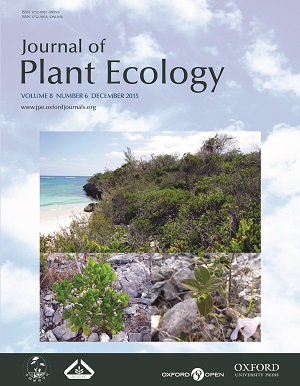Current Issue
-
 Volume 8 Issue 6
Volume 8 Issue 6
Naturally disturbance-prone coppice on the eastern coast of Eleuthera, The Bahamas and two coppice shrub species capable of rapid post-disturbance vegetative growth and reproduction: Erithalis fruiticosa (left, flowering ~1 year after severe disturbance) and Lantana involucrata (right, ~5 months after disturbance). Photos taken by G. Fleming.
IF: 3.9
CiteScore: 5.7
CiteScore: 5.7
Editors-in-Chief
Yuanhe Yang
Bernhard Schmid
Yuanhe Yang
Bernhard Schmid
CN 10-1172/Q
ISSN 1752-9921(print)
ISSN 1752-993X(online)
ISSN 1752-9921(print)
ISSN 1752-993X(online)







